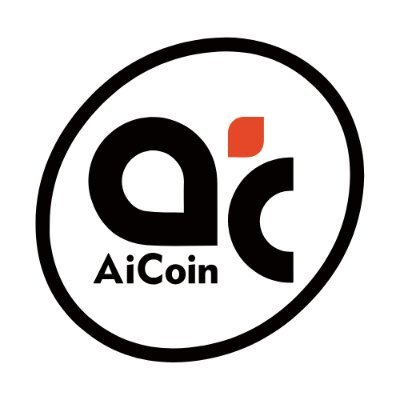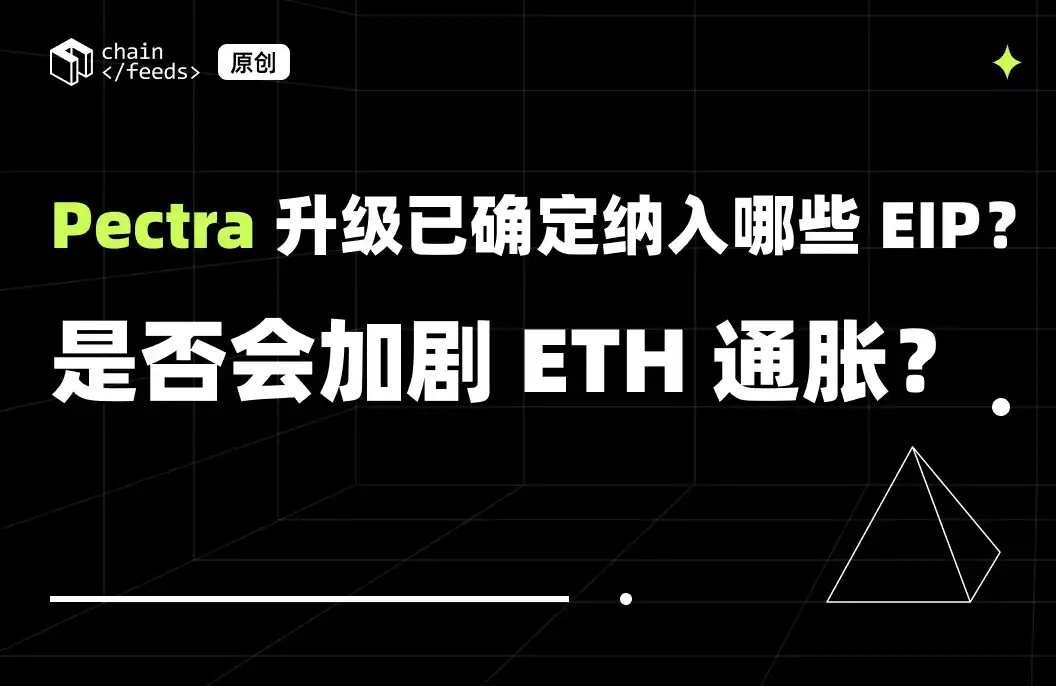Web2 Giants Are Playing Their Part to Support Crypto Purchases Everywhere
The post Web2 Giants Are Playing Their Part to Support Crypto Purchases Everywhere appeared first on Coinpedia Fintech News
Once upon a time, crypto was called the wild west, an arid playground run by cowboys with wallets full of BTC and dreams of Lambos. Fast forward to 2025, and that rugged landscape’s been significantly tamed – but has retained its ability to consistently surprise. One of the more pleasant surprises to have surfaced in recent years has been the willingness of businesses once branded the enemy of crypto to support its infiltration into every payment systems.
Web2 giants – those familiar names powering your online life – are saddling up, bringing their muscle to the crypto corral. PayPal, Visa, Mastercard: they’re all cantering in, and it’s a genuine game-changer. Why? Because when these titans join the party, crypto stops being a fringe fantasy and starts feeling like something you’d actually use on the daily. They don’t often receive credit for their Damascene conversion, but plaudits are due for the web2 players who’ve come full circle.
Financial Players with Skin in the Game
Let’s start with the big guns. PayPal kicked things off in 2020, letting users buy, sell, and hold cryptos such as BTC and ETH. By 2024, they’d upped the ante, integrating stablecoin PYUSD and rolling it out to 430 million users worldwide. Visa’s not far behind; since 2021, they’ve settled over $2.5 billion in crypto-linked transactions. Mastercard, meanwhile, are pushing crypto debit cards and piloting blockchain payments. From a user perspective, it means that if you’re already on PayPal or swiping a Visa, crypto’s not a leap – it’s a sidestep. These giants are effectively turning “what’s a wallet?” into “oh, I already have that.”
Neo-banks, the cool kids bridging old money and new, are also doing a lot of the heavy lifting here. Take Crypto.com, over 80 million users strong and with billboards at seemingly every major sporting event. Great name, globally recognizable brand. They’ve just added PayPal as a payment method, letting you fund your crypto buys straight from your PayPal balance.
This means no interminable transfers, no extra apps: just seamless integration into a platform you already trust. It’s like adding crypto to your financial toolbox without needing a manual. Neo-banks like Crypto.com aren’t so much lowering crypto’s adoption curve as steam-rollering it till it’s pancake flat.
Don’t Forget the Partnerships Driving Adoption
Web3 projects love a good partnership announcement, and in collaborating with web2’s major players, they’ve inked deals that are more than mere vapor. PayPal and Visa teamed up last year to streamline crypto payouts – think freelancers getting paid in USDC via Visa Direct. Mastercard’s collab with wallet providers like MetaMask and Trust Wallet, meanwhile, let users top up cards with crypto in seconds.
Then there’s Mercuryo, the rising fintech star, partnering with web3 heavyweights like Polygon and now powering euro crypto cards with Mastercard. These tie-ups aren’t just headlines; they’re highways, paving the way for crypto to flow into everyday life. Whether you position it as a web2 player streamlining access to web3 or vice-versa, the upshot is that Mercuryo and other payment providers are now mainstays for much of the money that flows between the on- and off-chain worlds 24/7.
Why Now?
What’s fueling this fire in web2 giants? They’re not entering web3 out of FOMO – they’re smarter than that. Rather, their decision to support the cryptoconomy rather than sit it out on the sidelines is driven by more rational reasoning. With much of the regulatory risk and “exoticness” of crypto having been tempered, it’s a lot safer for these TradFi titans to enter the fray. And there’s money for them to make by connecting the old world with the new.
As for the competencies they bring to bear within the crypto arena, first there’s user experience: we’re talking apps so intuitive even your grandma could buy ETH. Second, there’s security: Visa’s fraud protection and PayPal’s two-factor authentication make crypto feel less like a gamble. Third, familiarity: linking crypto to Apple Pay, Google Pay, or your trusty Visa card shrinks the learning curve to a blip. That’s the vibe: safe, simple, and second nature.
Case Studies: The Proof’s in the Pudding
The partnership between Mercuryo and MetaMask is a masterstroke for simplifying crypto onboarding. Their integration lets users buy crypto with a bank card in under a minute – no wrestling with seed phrases or navigating convoluted exchange signups. By tapping into Mercuryo’s payment infrastructure, MetaMask users can fund their wallets seamlessly, whether it’s ETH for gas fees or stablecoins for DeFi.
Mercuryo’s not stopping there. Their focus on localized solutions, such as SEPA transfers in Europe or OVO in Indonesia, means users globally can jump into web3 without friction. The MetaMask hookup has evolved with features like no-KYC purchases up to €699, slashing barriers for newcomers. Users appear to be relishing the ability to top up their wallet with a tap, then spend via Mercuryo’s Mastercard-backed crypto card. It’s a full-circle play: buy crypto fast, spend it faster.
PayPal has been a crypto trailblazer since 2020, with 35 million merchants and crypto trading live since 2021. They’ve onboarded millions to crypto, leveraging a user base of 430 million. The real kicker? Their stablecoin, PYUSD, launched in 2023 with Paxos, is now a checkout option across their network. Moving beyond mere hodling, PayPal’s pushing real spending: users can settle tabs with PYUSD at merchants or send it fee-free to friends in the U.S. It’s crypto with training wheels, wrapped in a familiar interface.
The numbers back it up: PYUSD’s market cap has climbed past $700 million, fueled by integrations like Venmo and Crypto.com. PayPal’s not just playing in web3; they’re reshaping it for the mainstream. With no fees for buying, selling, or sending PYUSD within their ecosystem (network fees apply externally), PayPal’s betting on trust and scale. It’s a bold pivot from their 1998 roots, proving they can still make an impact on the evolution of digital finance.
As a final case study to indicate the role web2 giants are now playing, Visa’s launch of Visa+ is a slick move to link digital wallets for instant payments and their crypto ambitions shine through. A pilot with Coinbase in 2024 saw 10,000 users moving USDC cross-border without the usual remittance headaches. Built on blockchains like Solana, Visa+ leverages stablecoin speed (think sub-second settlement) while keeping the familiar swipe-and-go vibe. It’s a lifeline for freelancers or small businesses, cutting costs that legacy systems like SWIFT pile on.
What This Means for Traditional Users
For the average Joe, all of this is good news. Barriers are rapidly crumbling and crypto’s no longer a techie’s toy. The interfaces mimic your banking app, so the learning curve’s virtually non-existent. There’s also the deep trust that comes when Visa or PayPal’s involved – these aren’t shady startups. A 2024 Deloitte survey found 62% of U.S. adults would try crypto if offered by a known brand. That’s the web2 effect: turning skeptics into spenders, one big brand at a time.
And all of this is just the warmup. Imagine crypto woven into every transaction: paying rent with ETH via PayPal, splitting dinner with Visa+ in USDC. Web2 giants aren’t stopping at buying and selling; they’re eyeing loyalty programs and cross-border micropayments. By 2030, Statista predicts 20% of global payments could involve crypto if integration keeps accelerating.
Web2 giants are no longer the NPCs playing a bit part in crypto adoption: they’re web3’s wingmen, dragging the industry from the fringes to the forefront. PayPal, Visa, Mercuryo and their ilk are rewriting digital finance, making it less about geeky experimentation and more about everyday ease. As these titans flex their reach, crypto’s shedding its mystique for something better: everyday utility.
Solana (SOL) – The Fast & Scalable Blockchain ⚡🚀💎
Solana is one of the most promising altcoins due to its high-speed transactions, low fees, and growing adoption in DeFi and NFTs. With its robust ecosystem and potential for institutional investment via ETFs, SOL is a key token to watch in the current altcoin surge.
🔹 Why Solana is Surging:
1️⃣ Blazing-Fast Transactions ⚡⏩
Solana can handle 65,000 transactions per second (TPS), far surpassing Ethereum’s 15-30 TPS.
Low gas fees (often fractions of a cent) make it ideal for DeFi, NFTs, and gaming applications.
2️⃣ Potential Solana ETF Approval 📈🏦
Speculation is growing that Solana-based exchange-traded funds (ETFs) could be approved soon.
Similar to Bitcoin & Ethereum ETFs, this would drive institutional money into SOL.
3️⃣ Expanding Ecosystem 🌎🚀
DeFi boom: Solana is home to major DeFi protocols like Jupiter, Marinade, and Raydium.
NFT dominance: Solana’s low-cost NFT minting has attracted projects like Mad Lads & Solana Monkey Business.
Memecoin frenzy: New Solana-based memecoins (e.g., BONK, WIF) are bringing fresh trading volume.
4️⃣ Strong Developer Community 👨💻🔧
Solana's developer count has increased, with more dApps launching daily.
Support from major investors like Multicoin Capital & Jump Trading ensures continuous innovation.
🔹 Current Market Data (Feb 2025)
💰 Price: $168.42
📉 24h Change: - $5.25 (-3.02%)
📊 High/Low: $173.67 / $166.82
🔹 Why Solana is a Strong Support & Resistance Asset:
✅ Support Levels 🛡️ – $150-$160 range is a strong accumulation zone for long-term holders.
✅ Resistance Levels 🚀 – If SOL breaks $175, it could trigger a rally toward $200+.
✅ Institutional Interest 📊 – If an ETF is approved, Solana could become a top-3 crypto asset.
🔹 Real-World Example:
Imagine Solana as the Tesla of Crypto – it’s ultra-fast, energy-efficient, and built for the future. Just like Tesla disrupted the auto industry, Solana is reshaping blockchain scalability and transaction efficiency.
Ethereum (ETH) – The Backbone of DeFi & Smart Contracts ⚡🔗🚀
Ethereum is the second-largest cryptocurrency and the leading smart contract platform, making it a key player in the ongoing altcoin surge. With constant upgrades, increasing institutional adoption, and a growing DeFi/NFT ecosystem, ETH remains a must-watch token.
🔹 Why Ethereum is Surging:
1️⃣ Ethereum 2.0 & Scaling Upgrades 🔄⚡
The transition to Proof-of-Stake (PoS) has made Ethereum more energy-efficient and scalable.
Layer 2 solutions like Optimism, Arbitrum, and zkSync are driving lower gas fees & faster transactions.
The upcoming Dencun upgrade is expected to further enhance Ethereum’s efficiency.
2️⃣ Institutional Adoption & Spot ETF Potential 🏦📈
There’s growing speculation that the SEC may approve a spot Ethereum ETF, similar to Bitcoin ETFs.
If approved, institutional investors (hedge funds, banks) could flood into ETH, boosting its price.
3️⃣ DeFi & NFT Growth 📊🎨
Ethereum is the foundation of DeFi, with protocols like Uniswap, Aave, and MakerDAO running on it.
Despite market fluctuations, NFT marketplaces (e.g., OpenSea, Blur) still dominate on Ethereum.
4️⃣ Global Developer Support & Security 🔐💻
Ethereum has the largest developer community in crypto, constantly innovating with new dApps.
Its strong security & decentralization make it the most trusted blockchain for financial applications.
🔹 Current Market Data (Feb 2025)
💰 Price: $2,816.49
📈 24h Change: +$40.18 (+1.45%)
📊 High/Low: $2,825.60 / $2,748.11
🔹 Why Ethereum is a Strong Support & Resistance Asset:
✅ Support Levels 🛡️ – Large buying interest around $2,500-$2,700 due to institutional accumulation.
✅ Resistance Levels 🚀 – If ETH breaks $3,000, it could signal a bullish breakout toward new highs.
✅ Long-Term Growth 📈 – As ETH supply reduces (due to staking & burning), price appreciation is expected.
🔹 Real-World Example:
Think of Ethereum as the App Store of Crypto – just like Apple’s ecosystem allows developers to build apps, Ethereum enables thousands of decentralized applications (dApps) to thrive. The more projects use Ethereum, the more valuable ETH becomes.

Aicoin-EN-Bitcoincom
22小時前
Robert Kiyosaki: Market Collapse Has Begun—Bitcoin’s Comeback Will Be Massive
Robert Kiyosaki, author of Rich Dad Poor Dad, expressed renewed concerns about a major financial downturn while sharing his thoughts on bitcoin in multiple posts on social media platform X this week. His book, which has sold over 32 million copies, has been translated into more than 51 languages and remained on The New York Times bestsellers list for over six years.
Kiyosaki cautioned on Feb. 20 about an impending economic crisis. “Giant crash???? If there is a giant crash of the often times called ‘the Everything Bubble,’ stocks and bonds, real estate, gold and silver and bitcoin will crash with it,” he described. Despite this grim outlook, he made it clear he has no plans to sell his BTC. Kiyosaki elaborated:
If the price of bitcoin crashes, I will back up the truck and buy more. Why: when the Everything Bubble crashes, which is happening now, bitcoin will be the fastest to recover and climb to higher highs.
He concluded his post by asking his 2.7 million X followers: “What is your after the crash plan?”
On Feb. 19, Kiyosaki discussed economic inequality, asserting that “the rich are getting richer but the poor and middle class grow poorer.” He attributed this to what he calls “fake $”—fiat currency that, in his view, benefits the wealthy while eroding the savings of everyday people. He wrote:
Fake $ makes the rich richer and the poor and middle class poorer. Fake $ causes assets such as gold to go up.
“And fake $ causes the cost of living such as food, gas, life’s inflation to go up in price, making life harder, more expensive for the poor and middle class,” he continued. Reaffirming his long-held stance, he stated: “The rich do not work for money and savers (of fake $) are losers,” urging individuals to invest in gold, silver, and bitcoin, which he regards as “real money.”
Revisiting his financial principles, Kiyosaki reflected on his Rich Dad Poor Dad teachings from 1997 in another X post, noting that publishers originally rejected his ideas. He reiterated three fundamental beliefs: “the rich do not work for money,” “your house is not an asset,” and “savers are losers.” Warning that “millions of employees are losing their jobs,” he emphasized that entrepreneurs continue to accumulate wealth. He also criticized dependence on fiat currency, stating: “Inflation is caused when the Fed and Treasury print trillions in fake money.” Encouraging people to safeguard their wealth, he referred to gold and silver as God’s money and bitcoin as people’s money, urging individuals to adopt his strategies for financial freedom.
免责声明:本文章仅代表作者个人观点,不代表本平台的立场和观点。本文章仅供信息分享,不构成对任何人的任何投资建议。用户与作者之间的任何争议,与本平台无关。如网页中刊载的文章或图片涉及侵权,请提供相关的权利证明和身份证明发送邮件到[email protected],本平台相关工作人员将会进行核查。


 最低價
最低價 最高價
最高價 

















































Gas 社群媒體數據
過去 24 小時,Gas 社群媒體情緒分數是 3,社群媒體上對 Gas 價格走勢偏向 看漲。Gas 社群媒體得分是 0,在所有加密貨幣中排名第 753。
根據 LunarCrush 統計,過去 24 小時,社群媒體共提及加密貨幣 1,058,120 次,其中 Gas 被提及次數佔比 0.01%,在所有加密貨幣中排名第 366。
過去 24 小時,共有 656 個獨立用戶談論了 Gas,總共提及 Gas 67 次,然而,與前一天相比,獨立用戶數 增加 了 53%,總提及次數減少。
Twitter 上,過去 24 小時共有 1 篇推文提及 Gas,其中 0% 看漲 Gas,100% 篇推文看跌 Gas,而 0% 則對 Gas 保持中立。
在 Reddit 上,最近 24 小時共有 2 篇貼文提到了 Gas,相比之前 24 小時總提及次數 減少 了 0%。
社群媒體資訊概況
3